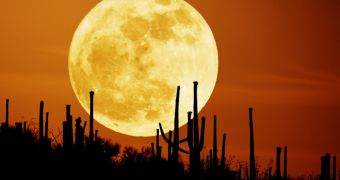It is widely believed that the Earth and the Moon, the way we know them today, could have been created during an impact between a planet roughly the size of Mars and the 'original' Earth. The collision between the two bodies completely destroyed them both, however gravity eventually pulled the cloud of debris together again and coalesced two rocky spheres, the Earth and the Moon, some 4.6 billion years ago.
Computer simulations carried out by Robin Canup, from the Southwest Research Institute, reveal that the collision between the two not only created our moon, but also may have severely altered the spin direction and rotation of our planet, something that all previous models related to this past event avoided to take into account.
Willing to find out at what extent the planet's spin rotation would be altered, Canup created a computer simulation involving more than 120,000 individual pieces of rock, in order to recreate the ancient collision. According to the results, prior to the collision Earth's spin axis was tilted at a much steeper angle than today, while the spin speed would have rendered days as short as 4 hours. Additionally, the spin direction is opposite to that experienced today.
If indeed the Earth would have spun at a much higher speed and in the opposite direction, then the model can accurately predict how the Moon's current spin rate came to be. Earth's fast rotation around its axis during the collision with the Mars-sized planet, today called Theia, would have ejected enough mass into space to create a cosmic body with a size approximately that of our moon.
Nonetheless, there are still many unresolved questions related to this theory, most of them being connected to the relative sizes of Earth and the colliding body Theia, and to how much material was actually ejected during the collision.

 14 DAY TRIAL //
14 DAY TRIAL //